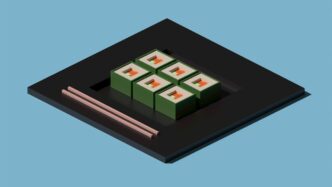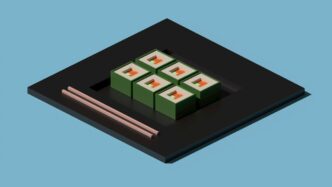Thinking about quantum computers? You might be wondering about the price tag. It’s a bit of a complex topic, not like buying a new phone. In 2025, quantum computer prices are still pretty high, but there’s a lot more to the story than just the initial cost. We’ll break down what you need to know, from the hardware itself to how you can actually use this tech without owning a super-lab.
Key Takeaways
- Buying a full quantum computer is super expensive, often costing millions, and isn’t practical for most people right now.
- The high cost comes from complex hardware, needing extreme cold, and lots of research for error correction.
- Accessing quantum computing through the cloud is much cheaper, with costs based on usage, making it accessible for businesses and researchers.
- Total costs go beyond just buying the machine; they include maintenance, specialized staff, and ongoing research and development.
- As the technology improves, quantum computer prices are expected to become more manageable, especially with cloud-based solutions.
Understanding Quantum Computer Prices in 2025
So, you’re curious about what it actually costs to get your hands on a quantum computer in 2025? It’s a bit like asking the price of a rocket ship – not exactly something you pick up at the local electronics store. The reality is, for most of us, buying a quantum computer outright just isn’t on the table right now. These machines are incredibly complex, highly specialized tools built for very specific, cutting-edge research and development.
The High Cost of Quantum Hardware
When we talk about the price tag for quantum hardware, we’re usually looking at figures that start in the millions and can easily climb to $15 million or more for enterprise-grade systems. Think of companies like IBM or D-Wave; their advanced systems represent a massive investment. This isn’t just for the core processing unit, either. The cost includes the intricate infrastructure needed to keep these delicate machines running.
Why Quantum Computers Are So Expensive
There are a few big reasons why these machines cost so much. First, the hardware itself is incredibly complex to build. Qubits, the basic units of quantum information, are super sensitive. To keep them stable and prevent errors, they often need to be cooled to temperatures near absolute zero, colder than outer space. This requires elaborate cryogenic systems, often using liquid helium, which itself is expensive to maintain.
- Extreme Cooling: Maintaining temperatures close to -273°C is essential for qubit stability.
- Environmental Control: Quantum computers need to be shielded from even the slightest vibrations and electromagnetic noise.
- Specialized Materials: The components used are often exotic and require precision manufacturing.
Beyond the hardware, there’s the ongoing operational cost. Think about the specialized teams of scientists and engineers needed to operate and maintain these systems, plus the continuous need for consumables like liquid helium. It all adds up, making the initial purchase price just the tip of the iceberg.
Beyond The Sticker Price: Total Cost Of Ownership
It’s easy to get fixated on the upfront cost of the hardware, but that’s only part of the financial picture. When you’re considering a quantum computer, you also have to factor in the total cost of ownership. This includes:
- Installation and Setup: Getting the machine physically into a suitable facility and hooked up can be a significant expense.
- Facility Upgrades: You might need specialized rooms with electromagnetic shielding or enhanced power and cooling systems.
- Maintenance and Support: Ongoing service contracts, expert technicians, and replacement parts are a must.
- Energy Consumption: These systems can be power-hungry.
- Software and Development Tools: Access to the necessary software and programming environments also comes at a cost.
For many organizations, especially those just starting to explore quantum computing, the idea of owning such a system is simply not practical. This is where cloud-based access becomes a much more sensible option, allowing users to tap into quantum power without the massive capital expenditure and operational headaches.
Quantum Computer Price Breakdown By Service Model
When you’re looking into quantum computing costs, it’s not just one big number. The price tag really depends on how you want to access this technology. Think of it like buying a car versus using a ride-sharing service – both get you somewhere, but the costs and commitments are totally different.
Enterprise Hardware Purchase Costs
This is the big leagues. If your organization needs its own dedicated quantum computer, you’re looking at a serious investment. We’re talking millions of dollars just for the core system. For example, some high-end systems can start in the $5 million to $15 million range. But that’s just the beginning. You also have to factor in:
- Installation and setup: Getting the machine physically into your facility and hooked up.
- Facility upgrades: This might include specialized cooling systems (like those using liquid helium to get near absolute zero) or shielded rooms to protect the delicate quantum bits from environmental noise.
- Ancillary equipment: Power, networking, and other support systems.
This option is typically for large enterprises with very specific, ongoing quantum research needs. It’s a massive commitment, not something a small business would jump into.
Cloud-Based Quantum Computing Access
This is where most people and businesses will interact with quantum computers for the foreseeable future. Instead of buying the hardware, you rent access to it over the internet. It’s a much more flexible and affordable approach.
- Pay-as-you-go: Services often charge by the quantum second or by the hour. Prices can range from a few dollars per hour to more depending on the type of quantum processor and the complexity of the task.
- Subscription models: Some providers offer monthly or annual plans, which can be cost-effective for regular users. These might range from a few hundred to a few thousand dollars per month.
- Research credits: Many cloud platforms offer free credits or discounted access for academic researchers and startups, making it easier to experiment.
This model means you avoid the huge upfront hardware costs and the ongoing headaches of maintenance and upgrades. It’s a great way to explore quantum computing applications without breaking the bank.
Research and Development Expenditures
Even if you’re using cloud services, there are often associated R&D costs. If you’re building your own quantum hardware or developing new quantum algorithms, these costs can be substantial. They include:
- Talent acquisition: Hiring highly specialized quantum physicists, engineers, and software developers is expensive.
- Experimentation: The cost of running numerous experiments, even on cloud platforms, adds up.
- Error correction development: A significant portion of R&D budgets goes into figuring out how to make quantum computations more reliable, as current systems are prone to errors.
These costs are less about the price of the machine itself and more about the human capital and ongoing scientific effort required to make quantum computing useful.
Factors Influencing Quantum Computer Prices
So, why exactly do these machines cost an arm and a leg? It’s not just one thing, but a whole bunch of complicated reasons that add up. Think of it like building a rocket ship – it’s not just the metal, it’s the engineers, the specialized materials, and the testing.
Technical Barriers and Infrastructure Demands
Quantum computers are incredibly sensitive. To work, their core components, called qubits, need to be kept super cold, like, colder than outer space, just a hair above absolute zero (-273°C). This requires massive, complex refrigeration systems that use things like liquid helium. Keeping that temperature stable is a constant battle, and any fluctuation can mess up calculations. Plus, these machines are easily disturbed by even the tiniest bit of environmental noise – think vibrations or electromagnetic fields. So, you need specialized, shielded rooms, which adds a huge chunk to the setup cost.
Qubit Stability and Error Correction Costs
Qubits are the heart of a quantum computer, but they’re also its weakest link. They’re prone to errors, a phenomenon called decoherence, where they lose their quantum state due to environmental interference. Fixing these errors is a massive undertaking. A significant portion of the research and development budget for quantum computers goes into developing sophisticated error correction techniques. For every qubit that does the actual computing, there might be many more working behind the scenes just to keep things stable and accurate. This complexity directly translates into higher costs.
Ongoing Maintenance and Operational Expenses
Buying a quantum computer is just the beginning. The running costs are substantial. That liquid helium needed for cooling? It’s expensive and needs constant replenishment, easily costing hundreds of thousands of dollars annually. You also need a team of highly specialized scientists and engineers to operate and maintain the system. These aren’t folks you can just hire off the street; they have advanced degrees and years of experience. Add to that the energy consumption of these massive cooling systems and the need for regular upgrades, and you’ve got a significant ongoing financial commitment.
Navigating Quantum Computing Costs For Different Users
So, you’re looking into quantum computing, huh? It’s not exactly like buying a new laptop. The price tag and how you access this tech really depends on who you are and what you’re trying to do. It’s a bit of a mixed bag out there in 2025.
Academic and Research Institutions
For universities and research labs, the big hardware purchases are usually out of reach. Most folks in academia are leaning heavily on cloud services. It’s way more practical than trying to build and maintain your own quantum setup. Some cloud providers even have programs that give researchers free or heavily discounted access, which is a lifesaver. You can get started with quantum computing access for as little as $0.30 per quantum second on platforms like AWS Braket. This lets you experiment and push the boundaries without the massive upfront investment.
Business Decision Makers: In-House vs. Cloud
This is where things get really interesting for companies. You’ve got two main paths: build your own quantum hardware or use cloud-based services. Building in-house means a huge initial cost, easily starting at $5 million and going way up from there. Plus, you’re looking at annual operating expenses of at least $2 million, covering things like specialized cooling and expert staff. This route is typically for massive organizations, like big finance or pharma companies, that need dedicated resources for core research and development.
On the other hand, cloud access is much more flexible. You can pay as you go, with costs ranging from $100 to $5,000 monthly. This is perfect for smaller businesses or those just starting to explore what quantum can do for them. It’s a way to validate ideas and run experiments without the financial strain of owning the hardware.
| Solution | Initial Cost | Annual Operating Cost | Best For |
|---|---|---|---|
| In-House Hardware | ≥$5M | ≥$2M | Core R&D at Big Finance or Pharma Firms |
| Cloud Service | $0 | $10K-$100K | Small/Medium Biz Validation Experiments |
Small Business and Startup Accessibility
For smaller players, the idea of owning a quantum computer is pretty much a non-starter right now. The costs are just too high. But that doesn’t mean you’re completely shut out. Cloud platforms are making quantum computing accessible to a much wider audience. You can rent time on powerful quantum processors for specific tasks. This pay-as-you-go model means you only spend money when you’re actually using the quantum computer. It’s a smart way for startups to test quantum algorithms or explore potential applications without breaking the bank. Some services even offer introductory packages that make it even easier to get your foot in the door. The price range for these services can vary, but it’s a far cry from the millions required for hardware. You can find options that fit within a startup’s budget, making quantum exploration a real possibility.
The Future of Quantum Computer Prices
So, when are these super-expensive quantum machines going to get cheaper? It’s the million-dollar question, right? Well, the good news is things are definitely moving in the right direction. We’re seeing a steady trend of costs coming down, mostly thanks to cloud access models. Instead of shelling out millions for hardware you might not even use to its full potential, you can rent time on a quantum computer. This makes it way more accessible for businesses and researchers who just want to experiment or tackle specific problems.
Trends Driving Down Quantum Costs
Several things are helping to make quantum computing less of a financial black hole. For starters, the cloud is a big deal. Companies like AWS, Azure, and Google Cloud are offering access to quantum hardware, letting you pay for what you use, often by the second or minute. This is a huge shift from the old days of needing a dedicated, super-cooled lab just to get started. Plus, as the technology matures, manufacturing processes are getting more efficient. Think about how much computers have shrunk and dropped in price over the last few decades – quantum is on a similar, albeit slower, path.
Technological Advancements and Price Shifts
We’re also seeing breakthroughs in qubit stability and error correction. Remember how qubits are super sensitive and prone to errors? Well, researchers are getting better at keeping them stable and fixing mistakes. This means less wasted computation time and less need for incredibly complex, expensive cooling and shielding systems. For example, improvements in error rates, like the ones seen with Google’s Willow chip in late 2024, signal that the hardware itself is becoming more robust. This robustness directly translates to lower operational costs and, eventually, lower prices for users.
When Will Quantum Computer Prices Become More Accessible?
Predicting exact timelines is tricky, but most experts agree that widespread accessibility is still a ways off – think five to ten years out for truly mainstream use. However, for specific applications and research, the cloud is already making things much more affordable. We’re not talking about having a quantum computer on your desk anytime soon, but for businesses looking to explore its potential for optimization, simulation, or AI, the barrier to entry is significantly lower than it was even a year or two ago. The key is to keep an eye on cloud service providers and research institutions, as they’ll likely be the first to offer more budget-friendly options as the technology scales.
Wrapping Up: Quantum Computing’s Price Tag in 2025
So, what’s the takeaway on quantum computer costs for 2025? It’s pretty clear that buying your own quantum machine is still a far-off dream for most of us. We’re talking millions for the hardware alone, plus ongoing costs for upkeep and expert teams. It’s a serious investment, mostly for big companies and research labs. But here’s the good news: cloud access is making quantum power available without the massive upfront expense. For businesses and researchers looking to experiment, paying for quantum time in the cloud is the way to go. As the technology matures, we’ll likely see costs continue to shift, making this powerful computing even more accessible down the line. Keep an eye on these trends – the quantum future is coming, and it’s getting closer.
Frequently Asked Questions
How much does a quantum computer actually cost?
Buying a whole quantum computer is super pricey, usually costing between $5 million and $15 million for the main equipment. But that’s just the start! For most people and many businesses, it’s not practical to own one right now because they are very specialized tools for scientists and labs, not everyday gadgets.
Why are quantum computers so expensive?
Quantum computers are costly because they need incredibly special and difficult conditions to work. They have to be kept super cold, almost as cold as space, using special cooling systems. Even tiny bits of heat or noise can mess up their calculations. Plus, keeping them running smoothly requires expert teams and lots of upkeep, like special liquids.
Are there cheaper ways to use quantum computers besides buying one?
Yes, absolutely! Many companies offer access to quantum computers through the cloud. This means you can use their powerful machines over the internet, often paying by the second or by the hour. This is much more affordable, especially for trying things out or for smaller research projects, and you don’t have to worry about maintaining the hardware.
What are the hidden costs of owning a quantum computer?
Besides the huge price tag for the machine itself, there are ongoing costs. Think about needing special rooms that are shielded from outside interference, paying for expensive cooling materials like liquid helium every year, and hiring highly skilled scientists and technicians to operate and maintain the system. These costs can add up to millions each year.
Can small businesses or startups use quantum computing?
For most small businesses and startups, buying a quantum computer is out of reach. However, cloud access is a game-changer! You can rent time on quantum computers for a much lower cost, allowing you to experiment with quantum technology for specific tasks without a massive investment. Some programs even offer free access for research.
When will quantum computers become more affordable?
The cost of quantum computing is expected to decrease over time as the technology gets better and more common. Advances in making qubits more stable and easier to manage, along with more companies offering cloud services, are helping to bring prices down. While they won’t be like buying a regular laptop anytime soon, they are becoming more accessible for research and specific business uses.














